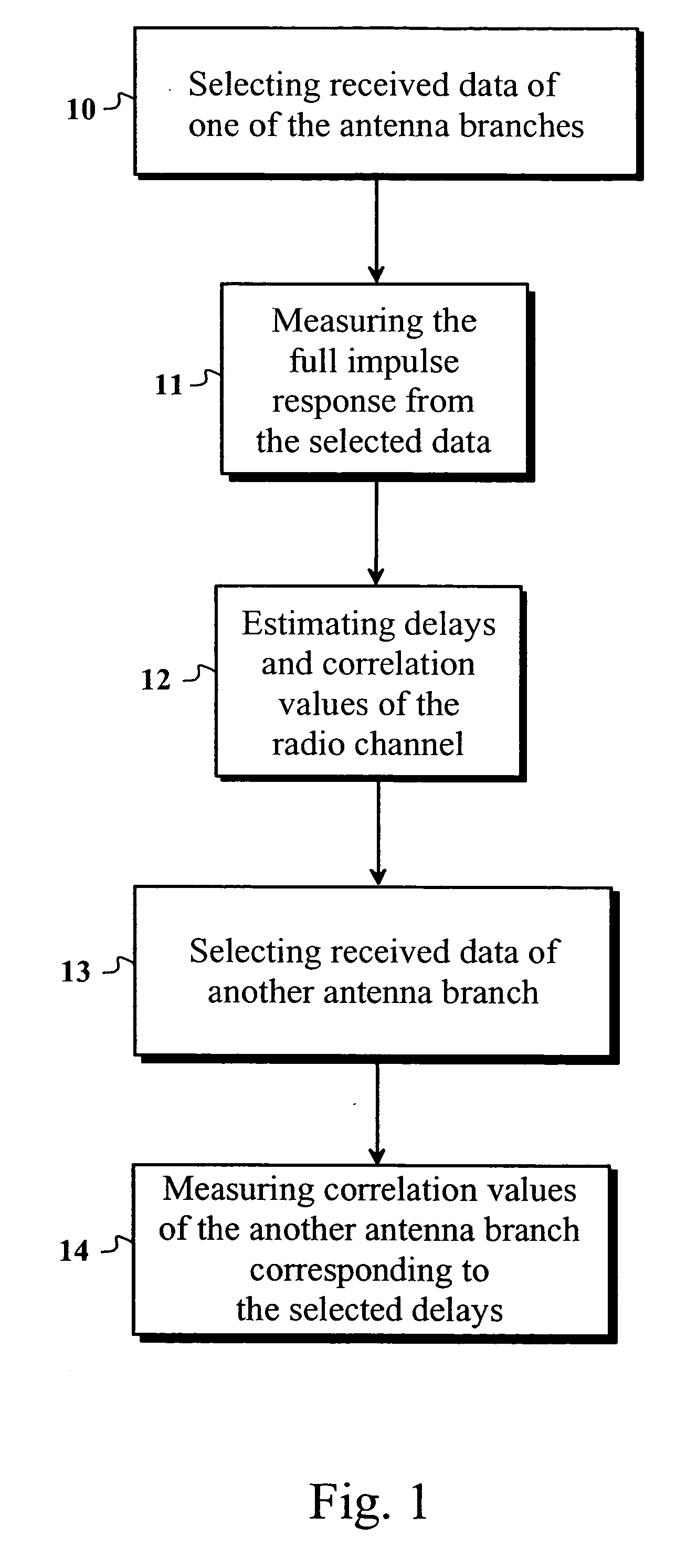Method and device for impulse response measurement
- Summary
- Abstract
- Description
- Claims
- Application Information
AI Technical Summary
Benefits of technology
Problems solved by technology
Method used
Image
Examples
Embodiment Construction
[0067] Reference will now be made in detail to the embodiments of the present invention, examples of which are illustrated in the accompanying drawings. The invention discloses a simple way to measure impulse responses of a radio channel in a receiver having a diversity antenna array. Especially, the purpose of the invention is to reduce the effects of the problems existing in prior art. The problems in the prior art solutions are greater computational complexity, which leads to the greater amount of hardware, power consumption and / or delays between measurements of each receive antenna. By measuring the impulse response cost-efficiently it is possible to fight effectively against the multipath propagation with a CDMA or WCDMA mobile terminal using e.g. a rake receiver.
[0068] One embodiment of the method according to the invention is disclosed in FIG. 1. This embodiment discloses a straightforward finger allocation procedure for one antenna branch. The idea of the invention is to se...
PUM
 Login to View More
Login to View More Abstract
Description
Claims
Application Information
 Login to View More
Login to View More - R&D
- Intellectual Property
- Life Sciences
- Materials
- Tech Scout
- Unparalleled Data Quality
- Higher Quality Content
- 60% Fewer Hallucinations
Browse by: Latest US Patents, China's latest patents, Technical Efficacy Thesaurus, Application Domain, Technology Topic, Popular Technical Reports.
© 2025 PatSnap. All rights reserved.Legal|Privacy policy|Modern Slavery Act Transparency Statement|Sitemap|About US| Contact US: help@patsnap.com



